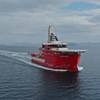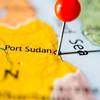Maersk Line Q3 Performance Better
Maersk Line said it has achieved improved results in the third quarter of 2014 (Q3) through lower costs and increased rates.
Revenue in Q3 was $7.074 million, as volumes increased by 3.7% to 2.4 million FFE. Maersk Line said its strategy is to grow with the market and the increase is in line with the above 3% market growth.
Søren Skou, CEO of Maersk Line, said, “I am very satisfied with the result. Not least our return on invested capital is satisfactory and again above our long-term target of 10%. Our strategy is paying off. We have proven it is the right strategy for us. Now we have to prove it is sustainable in the long-term.”
In September at the Maersk Group’s Capital Markets Day, Maersk Line revealed that new vessel capacity – 425,000 TEU in total – is needed for delivery bwtween 2017-2019 to grow with the market. Maersk expects to start ordering new vessels within the next six months.
In West Africa, Ebola has negatively affected Maersk Line’s trade and business in Guinea, Liberia and Sierra Leone, though the company maintains shipping services to and from these countries and its local offices remain operational.
On October 9, the U.S. Federal Maritime Commission (FMC) announced that it will allow Maersk Line’s vessel sharing agreement (VSA) with MSC to come into effect. The U.S. was the only remaining jurisdiction where the VSA – also known as 2M - had to obtain approval. The VSA will enable Maersk Line to offer more services and ports in the Asia-Europe, Transatlantic and Transpacific trades, as well as providing the company an estimated cost savings of $350 million per annum.
On November 5, Maersk Line announced a new CO2 target: the objective is now a 60% reduction in CO2 emissions per container transported by 2020 (2007 baseline). The previous target was 40%, which the company expects to reach this year.
“Our new 60% target is very ambitious, but it reflects our strong belief in our energy efficiency efforts,” Skou said. “We have proved that we can grow our business - transport more containers – and in the same time decrease our fuel consumption and cut CO2 emissions. By being innovative and dedicated, we believe that we can continue to push the boundaries,”
In Q3, Maersk Line’s bunker consumption was 2.4% lower compared to Q3 2013. Bunker efficiency improved by 5.9% to 916 kg/FFE (974 kg/FFE).
Maersk Line expects a full-year result above $2 billion, a specification of the previous “significantly above 2013 ($1.5 billion)” result expectation, as the company predicts the global demand will grow by 3-5%.
Skou concluded, “We are on a strong trajectory, but we also have some big challenges ahead of us. Rates are on a long-term, declining trend, the profitability on the East-West trades is unsustainable, and supply will continue to outstrip demand. Imports to emerging markets are also slowing down. So we have to remain focused and committed to cost leadership.”











